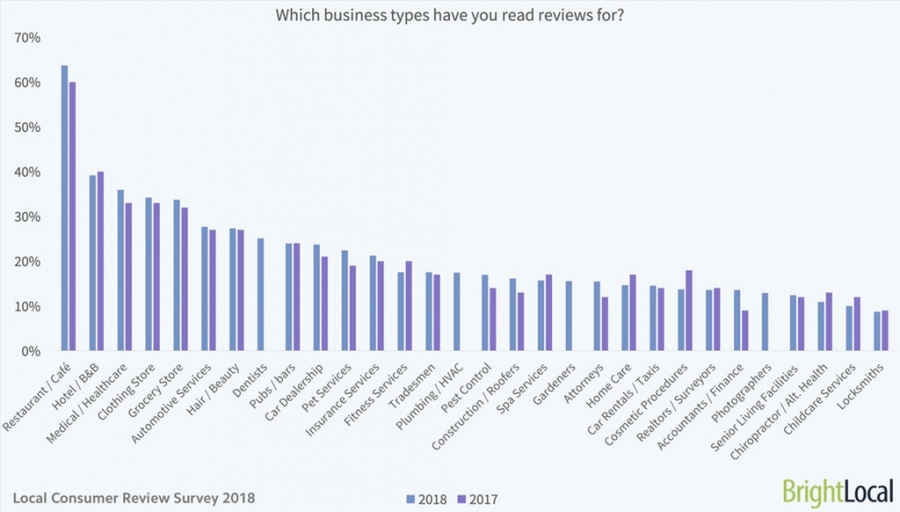If these three major restaurant marketing trends don’t get your attention and find themselves reflected in your restaurant marketing strategies, you may find your restaurant getting served – by the competition.
Three Trends Impacting Restaurant Success Right Now
Once upon a time restaurant marketing was simple and straightforward. A yellow page listing and occasional newspaper ad or coupon was all that it took to bring new restaurant customers in the door, along with personal referrals from your most loyal restaurant patrons, of course. Restaurant marketing isn’t so simple anymore!
Now, a restaurant marketing strategy must include significant investment of time and resources in digital marketing including development and constant updating of a restaurant’s:
- Website (search and user friendly, regardless of device)
- Distribution of digital ads, coupons and offers
- Social networks
- Email marketing
- Review and rating sites
In addition, your restaurant marketing strategy still needs to include offline restaurant marketing activities including networking, community involvement, customer relations and reputation management. We want to draw your attention to three important restaurant marketing trends, in particular, as noted in a BrightLocal.com consumer review survey.
3 Restaurant Marketing Trends and Strategic Takeaways
1. A 100% year-over-year increase in the number of people who used the internet to search for local businesses every day
27% of consumers looked online daily for a local business in 2018 – more than double the proportion in 2017. And if your ideal customer type is younger, this becomes even more important. 54% of shoppers aged 18-34 used the internet to search for a local business every day, and 81% of younger consumers did so at least once a week.
- Your restaurant marketing strategy must feature at its core an omni-device-friendly website optimized for local search. Older consumers largely use bigger devices (PC/MAC) to search for local businesses online while younger shoppers tend to search on mobile devices.
- Your website can’t just be a place-holder. Get ahead by adopting a content marketing strategy that incorporates best practices for SEO (search engine optimization) as well as publishing quality content for site visitors on a regular basis – at least weekly.
2. 86% of consumers read online reviews for local businesses and 40% ONLY consider reviews written within the past 2 weeks
One great write up or review can bring new customers in, but the effectiveness of a great review diminishes over time. Consumers know that over time, standards can slip, menus can grow stale, management can become complacent, and so on. Especially in the restaurant industry, where many shoppers are looking for something new to try.
- Restaurants must monitor online review and rating sites or risk inaccurate or dishonest reviews living a long life – and impacting their ability to attract new customers – on online review and rating cites (like Google, Facebook and yelp).
- Restaurants should solicit and post customer reviews and ratings on their own websites, social networks, blog and use them in email marketing.
- You can’t rest on your laurels. Getting testimonials, reviews and ratings must be an on-going initiative for restaurateurs.
3. Year-over-year increase in the number of consumers who read online reviews for restaurants
This goes beyond reviews and ratings, although it includes them. Year over year, more and more consumers rely on restaurant reviews when choosing which local eateries to favor. In fact, it’s not even close! For no other industry do consumers read more reviews than restaurants.
- Add reputation management to your restaurant marketing strategy – immediately! Although your restaurant’s reputation is certainly affected by reviews and ratings, it goes far beyond the quality of the food you serve or how fast you get it to the table.
- Today’s consumers expect businesses to respond to concerns and complaints within 24 hours or less, regardless of channel. 30% expect a response on social media within 30 minutes! Make sure you are continually monitoring not only review sites but your restaurant’s social media channels as well.
The reputation of your restaurant could also be affected by any number of other factors:
- Whether your staff members are pleasant or likeable, and their ability to deliver good service, consistently
- The cleanliness of your restaurant
- Your décor and the type of atmosphere and ambiance in your restaurant (and whether it resonates with members of your target markets)
- How your staff responds to the occasional problem or unusual patron requests
- Community involvement and charitable contributions
- Press coverage and PR
It may sound like a lot of work – and in truth, it is – but in a day and age when one bad customer review can be recorded and go viral immediately, the stakes have never been higher! Make sure that your restaurant marketing strategies are in line with what consumers say is most influential for them – or you risk getting served by the competition!
You might also like: How to Respond to a Bad Restaurant Review without Biting Back



